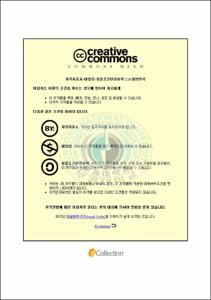Biodegradation of fish wastes in a 5-l ribbon-type reactor for re-utilization as a liquid fertilizer
- Alternative Title
- 액비로서의 재활용을 위한 5L 리본형 반응기에서의 수산폐기물의 분해반응
- Abstract
- The amount of fisheries waste generated in Korea is expected to increase with a steady increase in population to enjoy taste of slices of raw fish, which urger us to seek for an effective treatment of fish waste. To re-utilize fish waste as a fertilizer, eleven microorganisms were isolated from composting site and internal organs of earthworm, which showed active biodegradation of fish waste. Biodegradation was carried out in a 5-l ribbon-type reactor using fish wastes for seven days. By the active biodegradation, the weight of dry solid in the reactor was decreased with disappearance of fishy odor. The cell number increased, and pH decreased slowly. After biodegradation, hydroponic cultures of red bean and barley were carried out at various dilution ratios with the biodegraded broth, which is fit for test of its fertilizing ability. Elongation of root was slow after seed germination in all diluted broths of fish waste. However, roots elongated soon after development of root. The fastest growth was achieved at 500-fold dilution for both plants.
- Issued Date
- 2008
- Awarded Date
- 2008. 8
- Type
- Dissertation
- Publisher
- 부경대학교 대학원
- Affiliation
- 부경대학교 대학원
- Department
- 대학원 생물공학과
- Advisor
- 홍용기
- Table Of Contents
- Ⅰ. INTRODUCTION = 1
Ⅱ. MATERIALS AND METHODS = 4
1. Isolation of useful microorganisms = 4
2. Tests of antagonism and salt effect on growth = 5
3. Identification of useful isolates = 6
4. Aerobic biodegradation by screened isolate = 9
5. Fish oil extraction = 10
6. Analytical Methods = 11
7. Seed germination test = 12
8. Hydroponic culture = 14
Ⅲ. RESULTS AND DISCUSSION = 15
1. Screening of useful microorganisms = 15
2. Identification of the isolates = 16
3. Biodegradation of fish wastes = 20
4. Phytotoxicity of fermented broth of fish waste = 25
5. Fertilizing ability of fermented broth of fish wastes = 29
Ⅳ. CONCLUSION = 35
Ⅴ. ACKNOWLEDGEMENT = 37
Ⅵ. REFERENCES = 39
- Degree
- Master
- Files in This Item:
-
-
Download
 Biodegradation of fish wastes in a 5-l ribbon-type reactor for re-utilization as a liquid fertilizer.pdf
기타 데이터 / 829.53 kB / Adobe PDF
Biodegradation of fish wastes in a 5-l ribbon-type reactor for re-utilization as a liquid fertilizer.pdf
기타 데이터 / 829.53 kB / Adobe PDF
-
Items in Repository are protected by copyright, with all rights reserved, unless otherwise indicated.